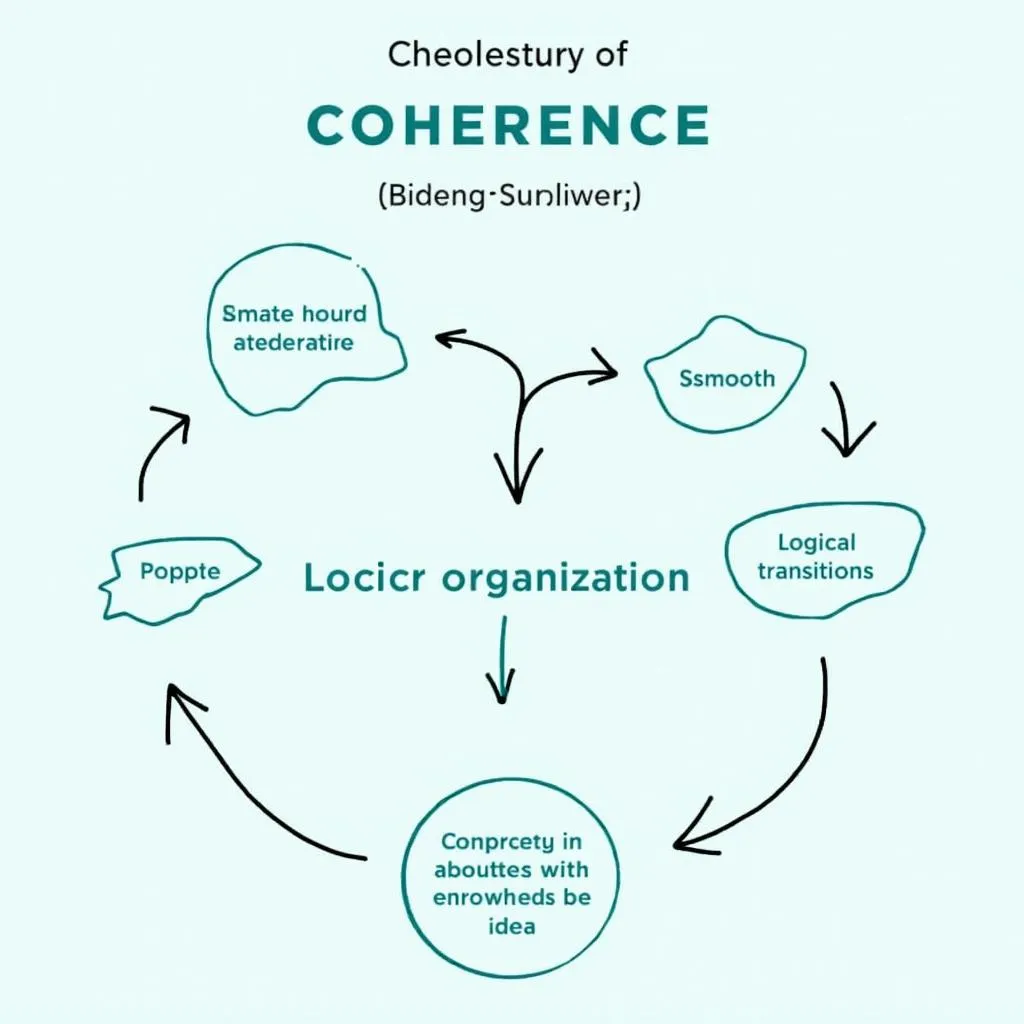Understanding Coherence in IELTS Speaking
Coherence in IELTS Speaking refers to the logical flow and organization of ideas in your responses. It’s a crucial element that examiners assess when evaluating your speaking performance. A coherent answer demonstrates your ability to express thoughts clearly and connect ideas seamlessly, making it easier for the listener to follow your train of thought.
Why is Coherence Important?
Coherence plays a vital role in effective communication during the IELTS Speaking test. It helps you:
- Present your ideas in a structured manner
- Maintain the listener’s attention
- Demonstrate your language proficiency
- Achieve higher scores in the Coherence and Cohesion criteria

Key Elements of Coherence in IELTS Speaking
To achieve coherence in your IELTS Speaking responses, focus on these essential elements:
1. Clear Organization of Ideas
Structure your answer with a clear beginning, middle, and end. Start with an introduction, develop your main points, and conclude with a summary or final thought.
Example:
Question: “Describe a memorable trip you’ve taken.”
Coherent response:
“I’d like to talk about my trip to Japan last summer. It was memorable for three main reasons. Firstly, the stunning natural beauty of the country left a lasting impression on me. Secondly, I was fascinated by the unique blend of traditional and modern culture. Lastly, the hospitality of the Japanese people made the experience truly special. Overall, this trip was unforgettable and taught me a lot about Japanese culture and myself.”
2. Logical Progression
Ensure that your ideas flow logically from one to the next. Use transitional phrases and connectors to link your thoughts.
Example transitional phrases:
- “Moving on to my next point…”
- “Another aspect to consider is…”
- “This leads me to my final thought…”
3. Relevant Examples and Details
Support your main ideas with specific examples, anecdotes, or details. This not only enhances coherence but also demonstrates your ability to elaborate on a topic.
Example:
“When I mention the blend of traditional and modern culture, a perfect example is the city of Kyoto. There, I saw ancient temples right next to sleek, modern buildings. One moment I was walking through a peaceful Zen garden, and the next, I was in a high-tech robot cafe.”
Techniques to Improve Coherence in IELTS Speaking
1. Use Discourse Markers
Discourse markers are words or phrases that help organize your speech and show the relationships between ideas. They can significantly improve the coherence of your responses.
Common discourse markers:
- To introduce a topic: “I’d like to talk about…”
- To add information: “In addition,” “Furthermore,” “Moreover”
- To contrast ideas: “However,” “On the other hand,” “Nevertheless”
- To conclude: “In conclusion,” “To sum up,” “All things considered”
2. Practice the PEEL Method
The PEEL method (Point, Explanation, Example, Link) is an effective technique for structuring your ideas coherently:
- Point: State your main idea
- Explanation: Elaborate on the point
- Example: Provide a specific example or evidence
- Link: Connect back to the main topic or transition to the next point
Example using PEEL:
“One of the most impressive aspects of Japanese culture is their attention to detail (Point). This is evident in almost every aspect of daily life, from the way food is presented to the design of public spaces (Explanation). For instance, when I visited a traditional tea house, I was amazed by the meticulous arrangement of the tea utensils and the precise movements of the tea master during the ceremony (Example). This level of precision and care reflects the deep respect for tradition and craftsmanship in Japanese society (Link).”
3. Develop Topic Sentences
Start each main point with a clear topic sentence that introduces the idea you’re about to discuss. This helps the listener understand the direction of your response.
Example:
“The natural beauty of Japan was truly breathtaking. From the iconic Mount Fuji to the serene bamboo forests of Arashiyama, the country offers a diverse range of stunning landscapes.”
4. Practice Paraphrasing
Improve your ability to rephrase ideas using different words and structures. This skill helps you maintain coherence when you need to clarify or elaborate on a point.
Example:
Original: “The food in Japan was delicious.”
Paraphrased: “The culinary experience in Japan was exceptional, with a wide array of flavors and textures that delighted my taste buds.”
Common Pitfalls to Avoid
To maintain coherence in your IELTS Speaking responses, be mindful of these common issues:
- Jumping between ideas without clear transitions
- Providing irrelevant information or examples
- Overusing filler words (e.g., “um,” “like,” “you know”)
- Failing to conclude your response or leaving thoughts unfinished
Next Steps: Practicing Coherence
To improve your coherence in IELTS Speaking, try these practical exercises:
- Record yourself answering sample IELTS Speaking questions and analyze your responses for coherence.
- Practice telling stories or describing experiences to friends, focusing on maintaining a logical flow of ideas.
- Watch interviews or TED Talks and pay attention to how speakers organize their thoughts and maintain coherence.
- Join an IELTS study group or find a speaking partner to practice regularly and receive feedback on your coherence.
By focusing on coherence in your IELTS Speaking practice, you’ll not only improve your scores but also enhance your overall communication skills. Remember, coherent speech is a valuable asset in both the IELTS test and real-life situations.